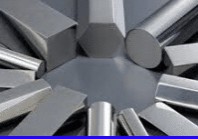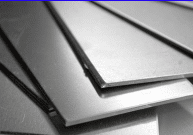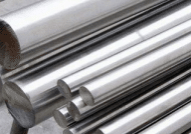Stainless Steel Supplier
Stainless Steel 303, 304, 316, 410



The One Stop Metal and Plastic Shop
Order stainless steel from Jade Metals today to ensure you receive top-quality, industry-standard metals. Our stainless steel products are known for their durability, corrosion resistance, and excellent performance in a wide range of applications. Whether you're in construction, manufacturing, or another industry requiring reliable materials, Jade Metals offers a variety of stainless steel options to meet your needs. Trust us for fast, efficient service and metals that meet the highest industry standards. Call us to purchase today and experience the exceptional quality that sets us apart.
303 Stainless Steel
Of all the austenitic grades, stainless steel 303 is the most easily machined. The presence of sulphur in the composition of 303 stainless steel is what gives it its ability to be machined. It should be noted, nevertheless, that sulphur also reduces the steel's ability to resist corrosion and slightly reduces its hardness. As with other austenitic grades, the hardness is still very good. Compared to 303, AISI 304 stainless steel has a stronger resistance to corrosion.
304 Stainless Steel
304 and 304L stainless steel kinds. The most adaptable and popular type of stainless steel is 304. Because the nominal makeup of type 304 is 18% chromium and 8% nickel, it is also known as 18/8. The 300 series Stainless Steel that is the most adaptable and widely used. Excellent forming and welding properties are present. Since Types 301 and 302 cannot be deep drawn as severely as AISI 304 stainless, this grade has become the industry standard for the production of drawn stainless steel products including sinks, splashbacks, and saucepans.
316 Stainless Steel
Food-grade and surgical stainless steel are both made of 316 stainless steel. Due to its greater resistance to chloride corrosion than type 304, stainless steel is also referred to as marine grade stainless steel. Extra-low carbon 316L is a grade of 316 that is typically used in stainless steel watches. It is frequently chosen for usage in marine environments due to its resistance to chloride assault. Flexible chimney liners employ the heat-resistant alloy 316Ti, which contains titanium.
410 Stainless Steel
The fundamental martensitic stainless steel, 410 stainless steel, will achieve high mechanical properties following heat treatment. It has good corrosion and scaling resistance up to 649°C as well as good impact strength. It is a good choice for severely stressed parts due to its strength, good ductility, and corrosion resistance in moderate atmospheres, steam, and mild chemical conditions. commonly utilised in applications involving petroleum chemicals, medical equipment, automotive exhausts, manifolds, and high-temperature engine parts.
